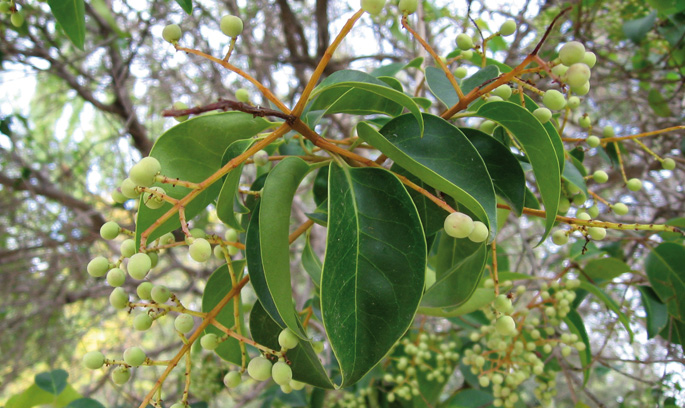

The last time I was surrounded by you. Jon Maia has taken over the strength of the forest and the tree over us, and the influence it has on our culture to make one of those great documentaries; Gutik Zura is called Gutik Zura and whoever wants to help with a few cents to materialize it can go to this website www.verkami.com/projects/14630-gutik-zura.. I had been wondering, and I cannot get out of my head the close relationship that exists between our culture and our wood.
Last weekend I was in Zubieta, in Malerreka. On the banks of the Ezkurra River, we have traveled Landa learning with the locals the names of their plants, mountains, places, etc. Among them is a nice collection of trees planted by Lino Elizalde de de Petrixen. There he explained what people know about these trees, lesson of all: if you want to get drunk from the fruit, its flower smells terrible, its grain was mixed to the cider, it is Chilean; we passed it one by one to get to know it in front. You learn by doing these kinds of presentations. A little further down, on the river bank we met the bush (common bush or Japanese bush) or “devil wood,” Ligustrum japonicum. Where does that “devil wood” come from? Its wood is hard and flexible, it is not easy to find it. The new branches have been used as a lace. Hence your name, Ligustrum? The Elder Pliny says that the Latin verb comes from the lecto go,āre (atar). I've also seen that wood in the chopsticks that close and open the barrels.
The family of Eneko, of Saldias, who was back from Landako of Zubieta, has thrown a pine tree, and since salaries have been taken, I wondered which tree to plant and how to plant. He mentioned passiacacia (Robinia pseudoacacia) and some have told him to be careful, to be invasive and that the owner of the limiting grounds will complain, and I: that he does what he does, that he puts what he does, that he will always have havoc with the mugants and that he will certainly go ahead with passiacacia. I also wanted to know about Secuoya (Sequoia sempervirens and Sequoiadendron giganteum), and about singing (Larix europaea), and myself the cedar (Cedrus sp.). I mentioned the table material that he caresses so much every time he comes to our house. In addition, he met in the collection of Lino the Cryptomerie (Cryptomeria japonica). Forest design, future.